- Popular Post

drtreelove
-
Posts
1,890 -
Joined
-
Last visited
Content Type
Profiles
Forums
Downloads
Posts posted by drtreelove
-
-
If you inoculated the initial planting, and are seeding the same plot relatively soon after incorporating the original, there is a good chance that the soil will contain adequate rhizobia for re-inoculation, if all factors for healthy soil life are maintained (like adequate and balanced mineral nutrients and water management), and no harsh chemistry applied.
From my understanding (those with more experience or science, correct me if I'm wrong): Don't count on the gathered seed carrying the inoculant, but rather the soil, so if seeding additional areas or if in doubt:
"Inoculate seed with cowpea-type (EL) rhizobia and drill seed at 30 to 50 lb/acre (USDA-NRCS, 2009) 1 inch deep on 6-inch rows in a tilled, weed-free seedbed. A higher seeding rate of 49–58 lb/acre has been used to establish thick stands for green manure (Wang and McSorley, 2009) and higher rates are also used in fiber production to insure upright stems, produce finer fiber, and to increase yield (Duke, 1983)."
https://www.nrcs.usda.gov/Internet/FSE_PLANTMATERIALS/publications/njpmcpg11706.pdf
-
 1
1
-
-
- Popular Post
- Popular Post
-
I haven't seen this in mango, but I would suspect a cutworm or leaf cutter bee. If it's happening at night, a cutworm is the most likely suspect.
https://en.wikipedia.org/wiki/Cutworm
https://www.gardeningknowhow.com/plant-problems/pests/insects/leaf-cutter-bees.htm
Go out at night and look for pest activity, inspect the stems and under side of leaves closely with a flashlight, to try and get a positive identification.
Since your tree appears to be in seedling stage and not a fruit producer yet, you could use a chemical insecticide barrier application, like the pyrethroid "bifenthrin", active ingredient in Chaindrite Stedfast 30SC.
An organic approach would be to spray the foliage and drench the soil with a neem seed extract product, Azadirachtin concentrate, a repellent and reproductive disruptor . And/or a soil treatment (where cutworm larvae may reside during day) of Metarhizium, or Beauveria, entomopathogenic fungi that attack the pest insect's cuticle.
But there is also the wait and see approach, because the tree will not likely be killed, the insect pest will pass the feeding stage of it's life cycle and the tree will re-foliate and outgrow the susceptible stage of growth. Avoid high NPK chemical fertilizers that stimulate excessive vegetative growth which is tender and attractive to pests. Enrich the soil with compost, and complete organic fertilizer.
Don
-
What sun exposure does your balcony have? Direct afternoon sun can be too much for these plants and the foliage will get sunburned, especially if water deficit occurs. If possible, provide shading. Airflow from the aircon unit will have a drying effect. Water management and getting that right will be your biggest challenge. Monitor soil moisture daily until you get to know how soon the water in the saucers dries up and the soil dries out. Watch for wilting of the foliage, evident in the photos, which indicates extreme water deficit. Monitor by watching the water in the saucer, digging into the soil surface with your finger, or buying a 'soil moisture meter', which helps to take the guess-work out of when to water.
Don't leave the probe in the soil or it will corrode, but probe the soil then pull it out and wipe it dry until next use. After you water, the dial should read 'wet'. Don't water again until the dial drops to the lower 'moist' range. Don't let it get to completely 'dry'.
The yellowing can be due to nutrient deficiencies, especially nitrogen and calcium, but it can also be due to impaired uptake of water and nutrients. Root bound plants in containers are a common problem when the plants are not repotted and upgraded to a larger pot with new soil every year or two. Root rot from overwatering can impair root function. Chemical fertilizers can kill off beneficial soil biology that are vital for nutrient absorption. Since you probably don't know the history of the gifted plants, you should consider buying new pots and enough soil to do the upgrade.
A complete balanced fertility program is what you want. High NPK chemical fertilizer like 15-15-15 tends to stimulate excessive vegetative growth, which looks good, but will be a magnet for mealy bugs and other pests and diseases. Use slow release organic fertilizer. Worm castings, and bokashi are available. I have used Organic Totto products with great results. But there are others listed on Lazada which I have not used.
I hope that helps. Don
-
You are assuming that the "wood dust" is sign of a termite infestation, but it could be powder-post beetles.
-
 1
1
-
-
I'm not sure without knowing more about the growing conditions, soil and water management, but this is common with water issues and sometimes made worse with nutrient deficiencies and salts.
Contributing factors can be water deficit/drought stress, or radical changes in water availability sometimes due to irregular irrigation, or wet during rainy season and then left to dry out too much without watering during dry season. Mulching the soil surface during the dry season and establishing a good watering program is important.
Looking at the photo, is that white material a rock/gravel on the soil surface? If so, it can reflect heat onto the palm trunks. Mulch with organic matter may be a better ground cover.
It can also be compounded by calcium deficiency. Most commercial NPK chemical fertilizers don't have a Ca component. Agricultural gypsum is one way to provide Ca without altering the pH (acid/alkaline balance).
August 29, 2014 by Permakulturnik
The importance of Calcium for health and proper functioning of the plant
Calcium is one of the elements, which are essential for plants. They need it in very large quantities – in Good soil, giving the highest value of fruits and vegetables, calcium is more than all the other necessary elements combined plants. It performs many functions in the plant (Calcium functions):
§ Regulates the absorption of other minerals by plants
§ It stimulates the correct elongation of plant cells
§ Strengthens the structure of the cell wall, which are responsible for the proper form and shape of plants
§ Participates in the process of enzymatic and hormonal
§ It helps to protect plants from heat stress
§ Protects the plant by diseases – many fungi and bacteria secretes enzymes, that attack the cell walls of plants. Strong and rich in calcium, cell walls are better able to resist the invasion of pathogens
§ Affects the quality of the fruit
§ It is needed for the proper functioning of stomata
-
22 hours ago, jvs said:
The trees in the back ground are figs.Big leafs,golden teak maybe?
Yes, looks like teak.

-
 1
1
-
-
On 9/23/2020 at 1:34 AM, GreasyFingers said:
Do some internet research with using vinegar. I am testing it at the moment on clover but still need more trials on other weeds and the affect on various grasses.
vinegar will be non-selective, thereby killing the grass too.
-
10 hours ago, stouricks said:
I have ordered this from Lazada. One place it was Bht 25 per sachet, another Bht 125 for 12. Guess which one I went for.
A bit confusing when it says that it will eliminate broad leafed weeds from lawns, and also grass from rice fields. I shall do a 'patch test' before the whole lawn.
https://www.corteva.in/products-and-solutions/crop-protection/almix.html
This product is new to me, but looking at the label and product description from Corteva (Dow - Dupont merger), Almix has pre-emergent and post-emergent properties and is designed specifically for rice. The pre-emergent aspect means that it inhibits seed germination, and I assume it is non-selective in that respect, therefore inhibiting grass and broadleaf weeds from developing from seed. The post-emergent properties appear to be selective to broad-leaf weed control. It's systemic, and an amino acid inhibitor like glyphosate/roundup.
So don't use it anywhere where you are planting anything from seed. And note that it is labeled for rice and not landscapes. It may kill the broadleaf weeds in turf, but be cautious with other plantings. The Corteva info states that it won't harm other plants unless sprayed directly on them, but beware of negative effects on trees and shrubs planted in or near the grass. I am working with a golf course right now that has trees declining on the perimeter of the fairways, and the damage appears to me to be herbicide poisoning (clumpy, stunted, curled, distorted, off-color foliage). Some broadleaf turf herbicides are known to be taken up by roots of trees and shrubs, especially from the herbicide 'dicamba'.
-
On 9/9/2020 at 8:52 AM, jvs said:
All my outdoor tool in Europe were Stihl,good product.
The blower we have now is about the same size as the Stihl handheld and it should have more output.
That is why i was thinking about a back pack,bigger engine.
I think i found a blower made by Makita,will try to get some more info tomorrow.
I don't know what's available in Thailand now, but I just bought a leaf blower last week. I'm in California and electric battery blowers and chainsaws are all the rage due to noise ordinances and public outcry about noise. And the equipment is getting better and better.
You can't just look at the size in order to judge performance. If you can't demo it, look at the specs, especially CFM (cubic feet per minute or metric equiv) and air speed in MPH or KPH, and the weight.
Like Kickstart, I've used blowers daily in tree and landscape work. Even though I'm a die-hard Husqvarna fan, I bought a Ryobi 40V lithium battery, handheld fan blower with 550 CFM and 125 MPH air speed. $200 out the door. I wouldn't want to blow warehouse parking lots with it, I'd be there all day, but for clean up after a small pruning job, its perfect. And oh so quiet.
From an online comparison of backpack blowers:
Power
Power is measured in a couple of different ways in blowers, including the engine capacity, the amount of air that is blown through the funnel, and the speed at which the air blows.
The Husqvarna and the Stihl don’t differ very much when it comes to engine power, both using roughly 4 horsepower to get the job done.
However, even though it’s not directly related to power, the Husqvarna X-Torq® engine is worth noting because of its ability to reduce exhaust emissions by as much as 60% compared to other engines.
The X-Torq® also helps make the entire system more fuel-efficient, so there are fewer stops to refill the tank, leading to a more productive machine overall.
When it comes to air power, the Husqvarna also does better overall. It has a 1024 cubic-feet-per-minute rating (the measure of the volume of air the blower moves, also known as CFM) in its housing and 908 CFM in the pipe.
Conversely, the Stihl blower only has a CFM rating of 677 at the nozzle, a number that’s significantly lower.
The Husqvarna also has a better average speed of 209 miles per hour with a flat nozzle and 206 with a round one.
The Stihl’s average air velocity is 199 miles per hour, though it can go as high as 238 if needed.
Comfort and Extra Perks
One of the reasons you buy a backpack blower is to be more comfortable clearing debris. However, just because the backpack blower is inherently easier to clear debris with, doesn’t mean that it is automatically a comfortable machine.
The design has a major impact on comfort levels and overall safety, and both companies do fairly well in this arena.
The Husqvarna and the Stihl both have adjustable support harnesses that are designed to breathe and move.
More importantly, though, they distribute the weight of the system evenly across the shoulders so that the machine is easier to carry overall.
Since both of these are over 20 pounds and intended for long periods of use, this makes a difference.
There are also several perks that each of these machines offers to make the experience easier.
One is the “cruise control” feature that the Husqvarna provides that allows you to set the blowing speed so that it’s easier to handle.
This is nice for if you are going to be blowing over a long period of time and don’t want to feel sore afterward.
Another perk to consider is environmental friendliness. Since power tools are constantly running and use gasoline, it’s important to consider the impact these machines have on the environment.
Both the Husqvarna and the Stihl are low-emissions producing, something that’s helpful for the planet but also for user health.
-
You will also need to attend to IPM, integrated pest management for your palms. There are killer pests that you don't want to get started or you will lose trees, one after another.
Preventive management is far better than waiting for an advanced infestation before attempting to control active pests. Coconut palms are particularly susceptible to several devastating pests, but some can go to ornamental palms too. Soil fertility that you are inquiring about is important for building resistance to pests, Calcium is an important transporter of other nutrients and is vital in building cell wall strength. Water management during dry season is the most important, not too much or too little. Sanitation is equally important, cleaning up debris piles and fallen tree trunks, and netting of compost piles where rhinoceros beetles can breed.
Search for the many forum discussions we have had on coconut rhinoceros beetle, red palm weevil and other palm pests.
There is a Thailand Agricultural Dept biological control center in Chonburi that has been responsible for developing and releasing biological control agents for commercial and resort palm pests. This is something to consider as an alternative to chemical control.
-
 1
1
-
-
On 8/29/2020 at 10:00 PM, Thailand Noobie said:
Hello. This is an old topic but I just like to know will same fertilizer works for every trees, mostly palm trees in Thailand?
Or do every trees have own
fertilizer? I need to take care several brand of palm trees and other normal Thai trees.
Disregard my advise from 10 years ago. My approach to soil fertility and plant nutrition has evolved with study and intensive practical experience. I now discourage the use of high NPK chemical fertilizers, there are inherent problems created with the repeated use. I now advocate for soil testing based fertilization, or next best is general purpose COF (complete organic fertilizer) mineralized, slow release, NPK percentages under 10. Read the chapter on COF in The Intelligent Gardener by Steve Solomon.
Soil testing is the best, with prescription soil amendments based on actual deficiencies found. Contact member Evolare about soil testing. bonemeal.net
Getting the Calcium level right, in proportion to Magnesium, is the most important and first thing to work on.
You can learn to make your own, but the only reasonably good COF that I know of being sold in Thailand is a bokashi from OrganicTotto in Samut Prakan.
-
The tree pictured being offloaded from the truck appears to be a Ficus species, probably Ficus microcarpa, Chinese banyan.
I caution about buying these field grown large trees in Thailand, there are some potential problems with the way they are traumatized and dug out with an extremely small root ball in relation to the maturity of the tree. All the absorbing roots are lost with the balling process, creating extreme physiological stress. The cut roots often become infected with soil borne pathogens, causing wood decay infections which progress up into the root collar in two to five years. The decay can cause loss of conduction of water and nutrients, and can also cause structural failure as the tree grows in size.
When I was doing tree care consultations in Chiang Mai, I had many calls for trees that were purchased like this for an instant effect, but then after a few years in the ground were in decline or had extreme root and root crown decay, or had toppled due to root rot.
It's better to start with younger trees, select a good location with good growing conditions, water and fertilize properly and allow them to develop a healthy root system. Usually they will overtake the growth of the poorly managed larger trees within a few years, and be healthier and more structurally sound in the long term.
-
 2
2
-
-
13 minutes ago, Susco said:
Thanks for the comprehensive explanation.
The bottle actually says Glyphosate - isopropylammonium
Usually it takes about 3-4 days to show results on the same application, and I always read that applying on a hot day will give best results, so that is why I expected quicker result this time.
Seems that is not really correct then, as I recall that with previous applications it usually rained within the next 24 hours, sometimes shortly after the application.
Hey, product quality is always a question in my mind. I've had some fails with pesticides and fertilizers that I was sure was due to poor quality, or outright fraud.
In 2005 I attended all three days of a regional "Pesticides in Southeast Asia" conference in Chiang Mai. It was sponsored by the Rockefeller Foundation and the presenters were scientists and researchers from universities and organizations from all over the region. It was shocking to hear of some of the extreme health and environmental issues that are a result of local practices, old generation harsh chemistry pesticides and contaminated materials. More than one presenter told of inconsistencies in product formulations, contamination and undisclosed toxic substances in products from China and India where a lot of Thailand's chemicals come from.
-
On 7/30/2020 at 8:39 AM, jak2002003 said:
Wow...thanks so much for that info....I LOVE custard apples, and never considered planting them...no idea what the tree was like.
So I definitely will plant one of those....
So now I have decided on a custard apple tree and a pomegranate tree so far......
Any more suggestions welcome.
Guava?
ฝรั่งF̄rạ̀ng
2' width planting bed does not allow for much of a root system for long term growth. But these smaller trees may do well for awhile, on maybe a 5 to 7 year plan.
-
 2
2
-
-
59 minutes ago, cooked said:
In the dry season when things are hardly growing, it can take two weeks to show.
I'm sure you'll get some rain soon and you'll get results. I often spray a second time anyway, as heavy growths of grass etc prevents as yet smaller plants being properly attacked.
This is a good point. Two weeks is not uncommon. There are variables, soil and plant moisture content has a lot to do with translocation.
"Tall grass" will be harder to control than if you apply to younger, actively growing grass and other young weeds.
The glyphosate you purchased may not be fake, it may very well be what it says it is, but it may not contain the surfactants that make it more effective. That's what the RoundUp label products have perfected, and why they have been so popular, the most effective surfactants. But beware, the surfactants are what can volatilize into a gaseous drift and contaminate nearby crops, landscape plants and water, especially with high temperatures.
Another factor is the condition of the water for your tank mix. Alkaline, hard water will not allow the most effectiveness. Condition the water prior to mixing in the glyphosate concentrate.
"Always add ammonium sulfate (21-0-0) to glyphosate mixtures. Ammonium sulfate should be added at a minimum of 1.0 pound per acre if using greater than 12 gallons per acre of spray volume or 4 to 6 pounds per 100 gallons of spray mixture (lbs/100 gal) If water hardness is greater than 1600 ppm apply minimum of 8.5 to 17 lbs/100 gal."
"In order for Glyphosate to be effective
it needs to be absorbed into the plant.
In soft water Glyphosate has no problems in being absorbed,
however; in hard water Glyphosate will be "tied up"
and not be absorbed as readily.
This is known as "hard water antagonism".
Hard water contains high concentrations of the soluble salts, calcium (Ca++) and magnesium (Mg++).
When these are present in your spray water
the Glyphosate, which is negatively charged,
will combine with them to form Glyphosate-Magnesium
and Glyphosate-Calcium compounds.
These compounds are not as easily absorbed by the plant
and the result is poor uptake and poor weed control.
So how can growers increase the efficacy of
their Glyphosate treatments?
A common practice has been
to add a surfactant to the spray tank,
this allows the Glyphosate spray solution
to spread across the leaf surface better
and the result is greater absorption into the leaf.
Some Glyphosate products
now have the surfactant in them such as "Roundup Ultra".
Roundup Ultra does not solve the hard water antagonism problem by the addition of a surfactant though,
as the surfactant alone does not address this problem.
The hard water problem is best solved by
adding 17 pounds of ammonium sulfate per 100 gallons
to the spray water before the Glyphosate is added.
Urea - Ammonium Nitrate (28% liquid nitrogen)
will also improve the efficacy of Glyphosate,
but not as well a the Ammonium sulfate.
The addition of this compound to the spray water does two things.
First, the sulfate ions tie up the calcium and magnesium ions
by forming conjugate salts and
secondly, some of the Glyphosate ends up as
a Glyphosate-Ammonium compound
which some species of weeds preferentially absorb
into their leaf tissue over Glyphosate alone." -
-
Not sure about your rock, but I would think a course grade like that is best as fill. As for soil amendment, whether its volcanic basalt, granite or glacial, the finer the grind the better. Rock dusts are valued for their trace minerals content, and some basalts have high paramagnetism.
Soilminerals.com guru Michael Astera uses glacial rock dust/paramagnetic basalt in his awesome COF, Agricola's
4-8-4 (complete organic fertilizer). Thailand based organic grower materials supplier bonemeal.net now carries a glacial rock dust I believe.
https://geology.com/rocks/basalt.shtml
-
Thanks for posting. And with Rangoon Creeper flowers on the cover its off to a good start.
Too bad the mods don't see fit to pin a plant resources subject. I've given up on posting and reviewing horticulture books and resources, never any discussion or feedback. This is primarily the dog and snake forum. Farming in Thailand and the Organic subforum is more about a wide range of horticulture subjects, as well as agriculture.
-
 2
2
-
-
On 7/1/2020 at 6:28 AM, drtreelove said:
Another issue to be aware of with a banana plantation is soil borne pathogens. The big one worldwide is the devastating Panama disease, a fusarium wilt. It only goes to Cavendish variety as far as I know, but there are other pathogens, and they may not be detectable until disease is advanced and difficult or impossible to control.
Prevention is the best medicine. Soil testing, high-nutrient-density mineralized soil building, inoculation and enhancement of beneficial soil biology, biological fungicides and cover cropping are the way to go for an organic program approach in my opinion.
I just happened across this article on IPM for caterpillar control.
Note the time frame: "If you have a lot of moth caterpillar eating leaves in your garden, you can count on them doing a great deal of damage to your vegetable production and consuming quite a bit of your crop during the two or three weeks between their hatching and wrapping up in a cocoon."
Most people don't notice caterpillars until the later larva stage when feeding is almost finished before the pupa stage. So spraying is a panic reaction and may not achieve much reduction in plant damage, it's almost done. Consider this, remember what happened this year, put it on your calendar, and next year be prepared to start monitoring for baby caterpillars a month or two before you noticed them this year.
"Coat your plants thoroughly so the caterpillars ingest the product when they eat. This organic solution should be used frequently (every 3 to 5 days) until your caterpillar population is under control."
That's more frequent than I've ever had to use Bt, but a follow up spray or two is usually necessary. For an effective control standpoint, as well as economics, (the time and materials costs can add up,) so you want to get the timing right.
-
 1
1
-
-
4 hours ago, cooked said:
The word 'mulch' is a strange one. Looking into the etymology shows that it's been around for a long time:
"strawy dung, loose earth, leaves, etc., spread on the ground to protect shoots or newly planted shrubs," 1650s, probably a noun use of Middle English molsh (adj.) "soft, moist" (mid-15c.), from Old English melsc, milisc "mellow, sweet," from Proto-Germanic *mil-sk- (source also of Dutch mals "soft, ripe," Old High German molawen "to become soft," German mollig "soft"), from PIE root *mel- (1) "soft."
"Soft, moist, mellow, sweet, strawy dung." I like that!
-
 1
1
-
-
COF (complete organic fertilizer) Bokashi from Organic Totto
https://www.organictotto.com/index.php?lay=show&ac=article&Id=538831962&Ntype=1
Facebook and LINE
Boca chi fertilizer formula to accelerate flowering
Benefits
- Accelerates food accumulation to create flower buds.
- Make it very flowery and perfect.
- Sticky flower terminals do not fall easily.
- It helps to nourish the productivity, expands the size of the output, accelerates the yield.
-
 1
1
-
Another issue to be aware of with a banana plantation is soil borne pathogens. The big one worldwide is the devastating Panama disease, a fusarium wilt. It only goes to Cavendish variety as far as I know, but there are other pathogens, and they may not be detectable until disease is advanced and difficult or impossible to control.
Prevention is the best medicine. Soil testing, high-nutrient-density mineralized soil building, inoculation and enhancement of beneficial soil biology, biological fungicides and cover cropping are the way to go for an organic program approach in my opinion.
-
 1
1
-
-
23 hours ago, bannork said:
Those plants look better than the sickly one you showed first. The healthier plants will resist infestation, especially if your organic fertilizer is mineral balanced and has the 5 basic micronutrients as well as trace minerals. Avoid high NPK, high salt index fertilizers that are a pest magnet.
Thats a big planting, a lot of investment. Mono-cropping is risky, consider some intercropping with plants that attract beneficials, pest predators and birds for natural control. walk it every day to monitor for pest activity and be able to implement early intervention.
Overhead watering can be problematic and invite foliar fungal disease, and weeds, and water loss from evaporation.
B.t. has to be ingested by the caterpillar through feeding, so timing, placement and a spreader-sticker are important. And the timing has to be perfect to be effective. Monitor for caterpillar stage of development. 1st and 2nd instar stage is best for B.t. apps. Later instars, 4th and 5th may not be controlled by B.t.
Applicator should use a respirator with B.T., not just a mask. Microbial proteins can cause respiratory disorders, I learned the hard way. I have sprayed a lot of B.t. thinking its "organic" so no PPEs needed. wrong.
If mine, if mechanical control isn't practical, I would first determine if the moths were still flying in and laying eggs, or was it an early spring infestation that has come and gone. Some moths/butterflies have a very limited, once annual life cycle. Some have multiple life cycles a year. If determined to be a real and present problem, target the adult moth emergence, egg laying stage, with botanical repellent, so you don't get caterpillars to begin with. Azadirachtin, wood vinegar, aromatic oils, rosemary, clove etc.
-
 1
1
-
.png.3b3332cc2256ad0edbc2fe9404feeef0.png)


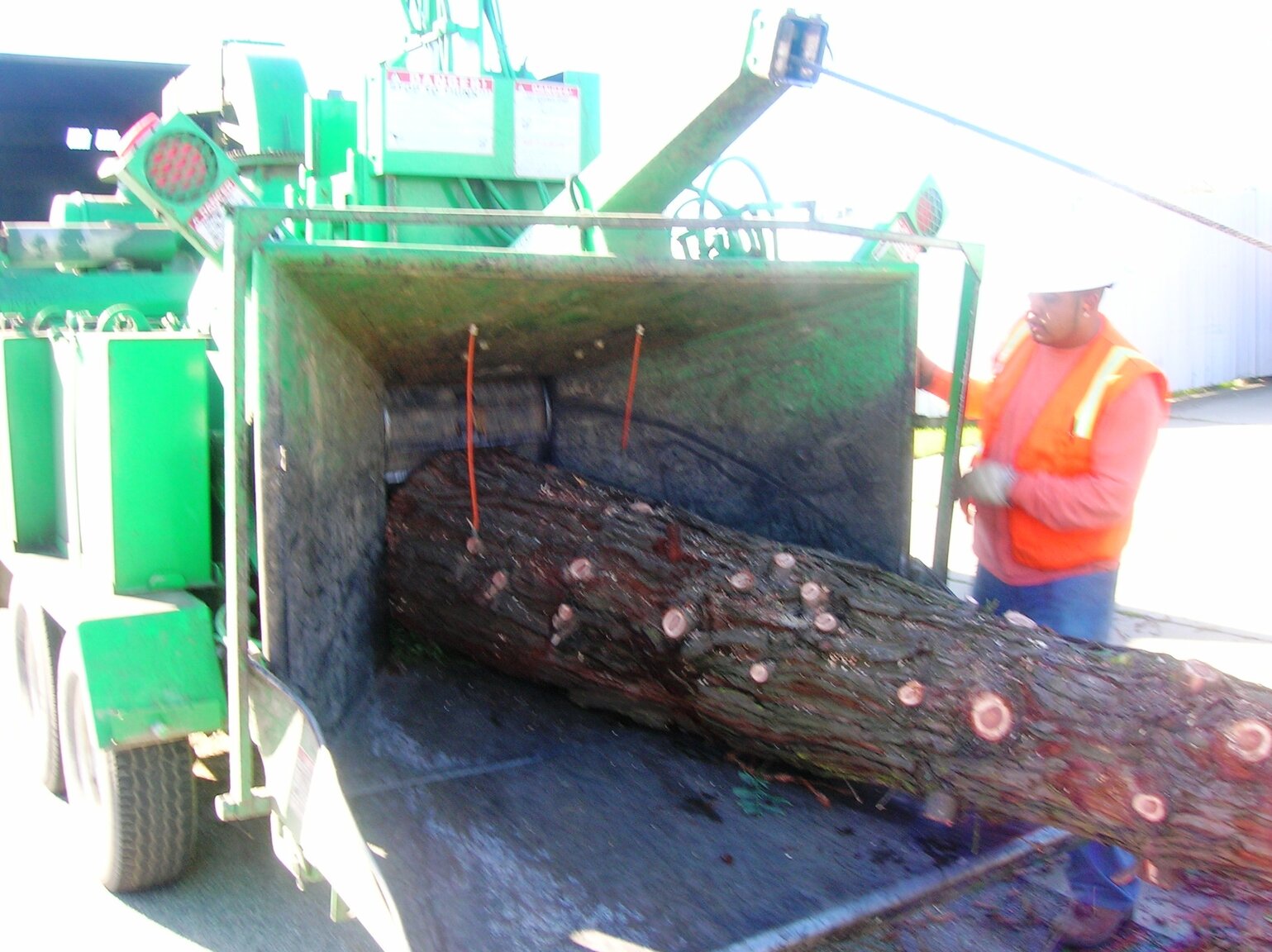
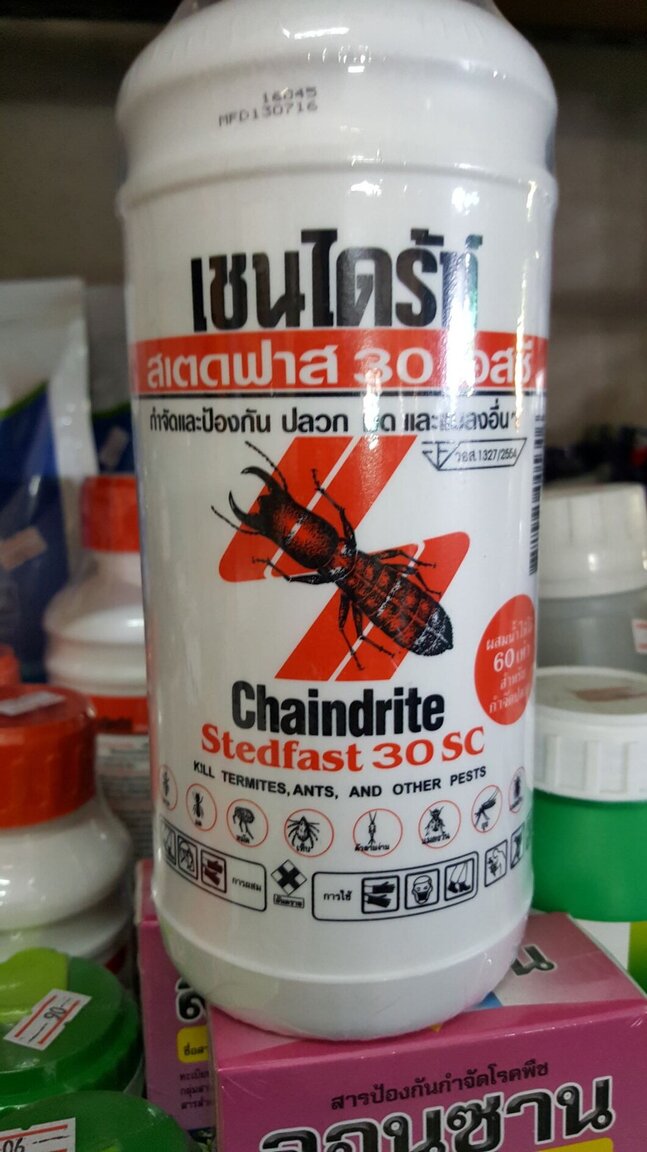
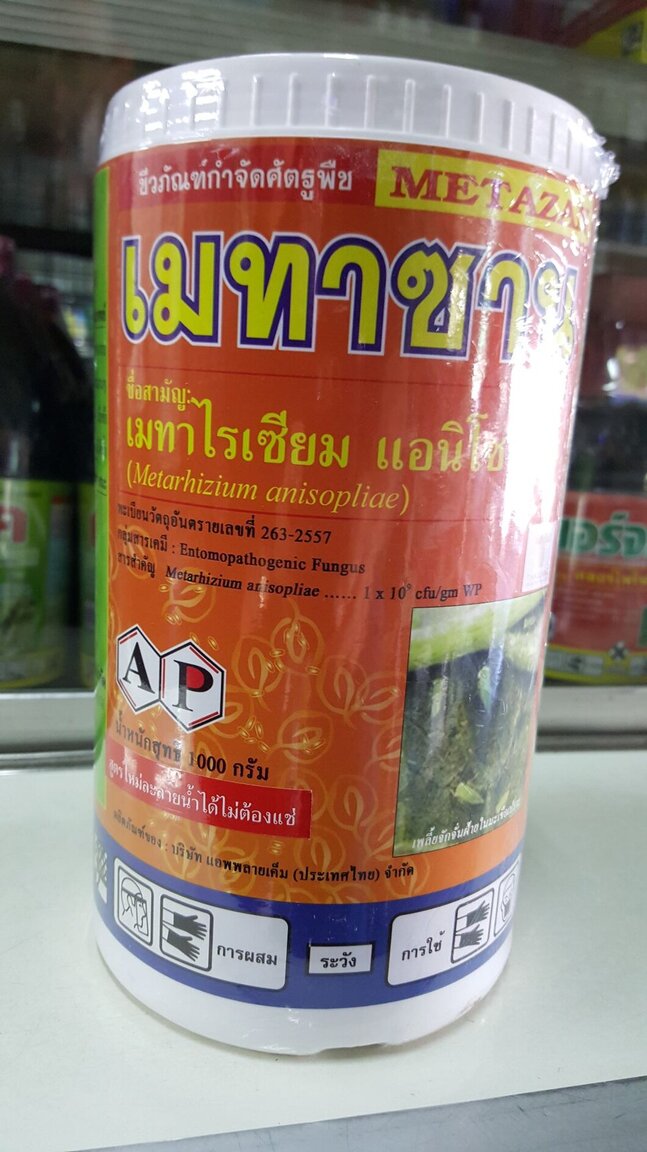
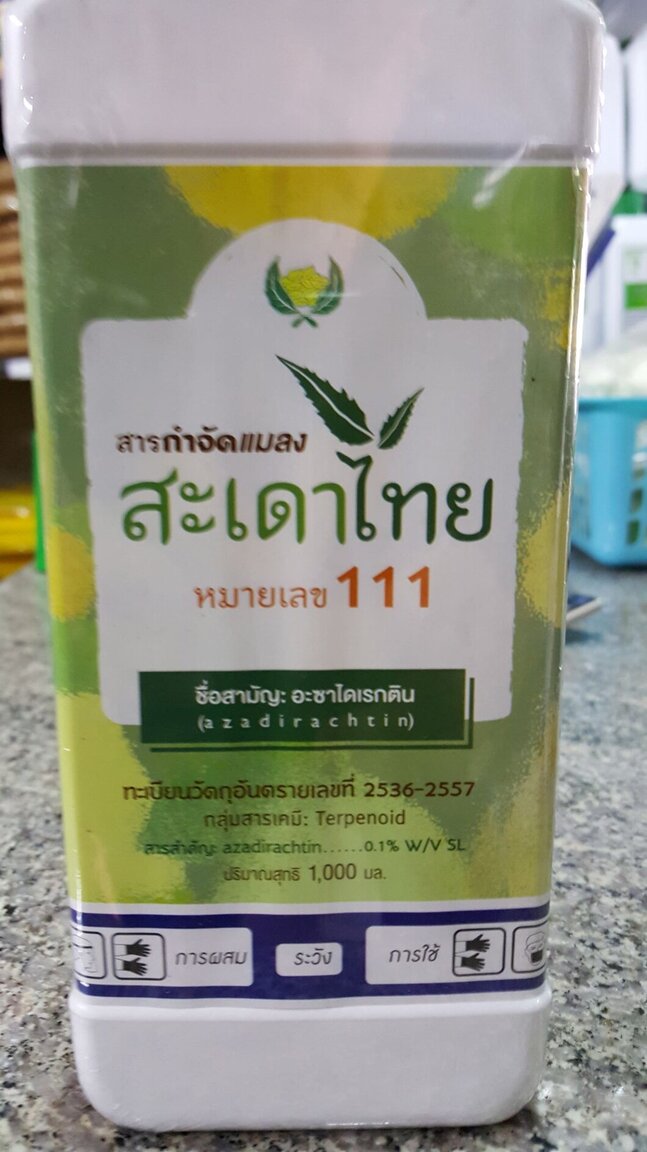
.jpg.64865f3e90d13b54cbc360c0d5d4e1c1.jpg)

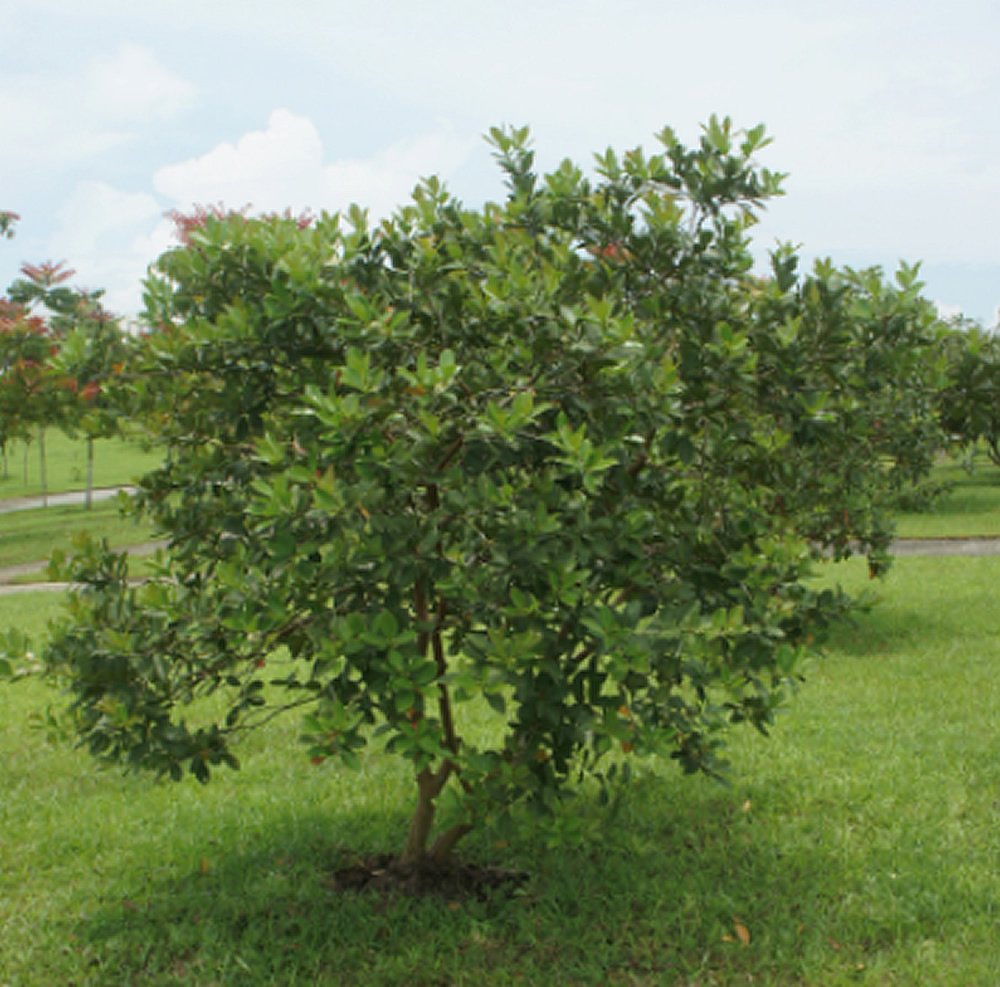
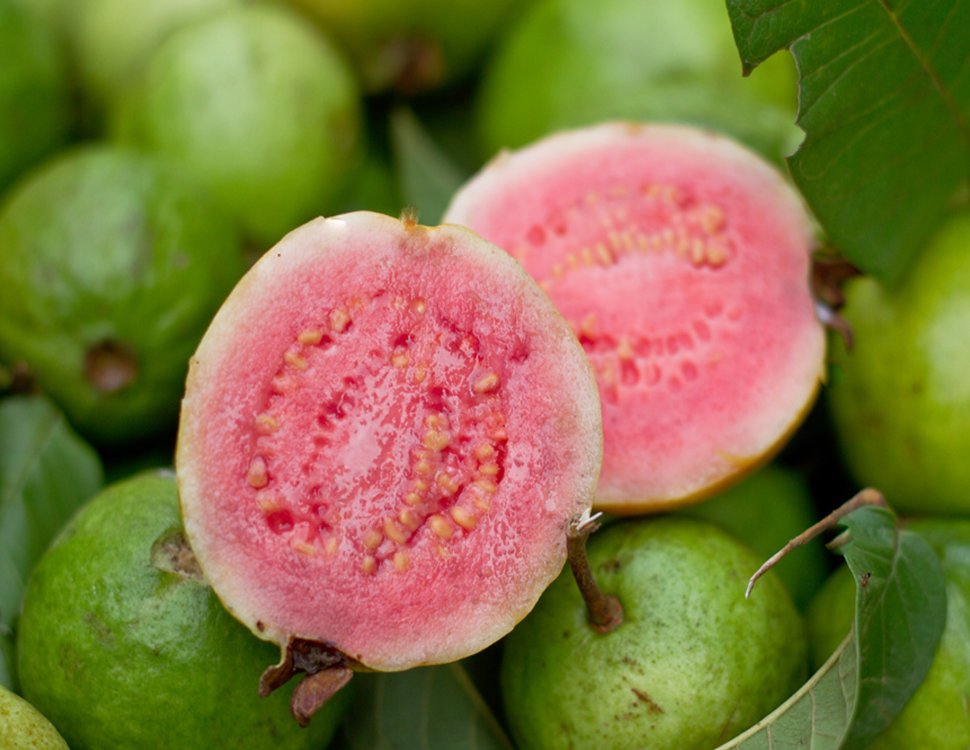
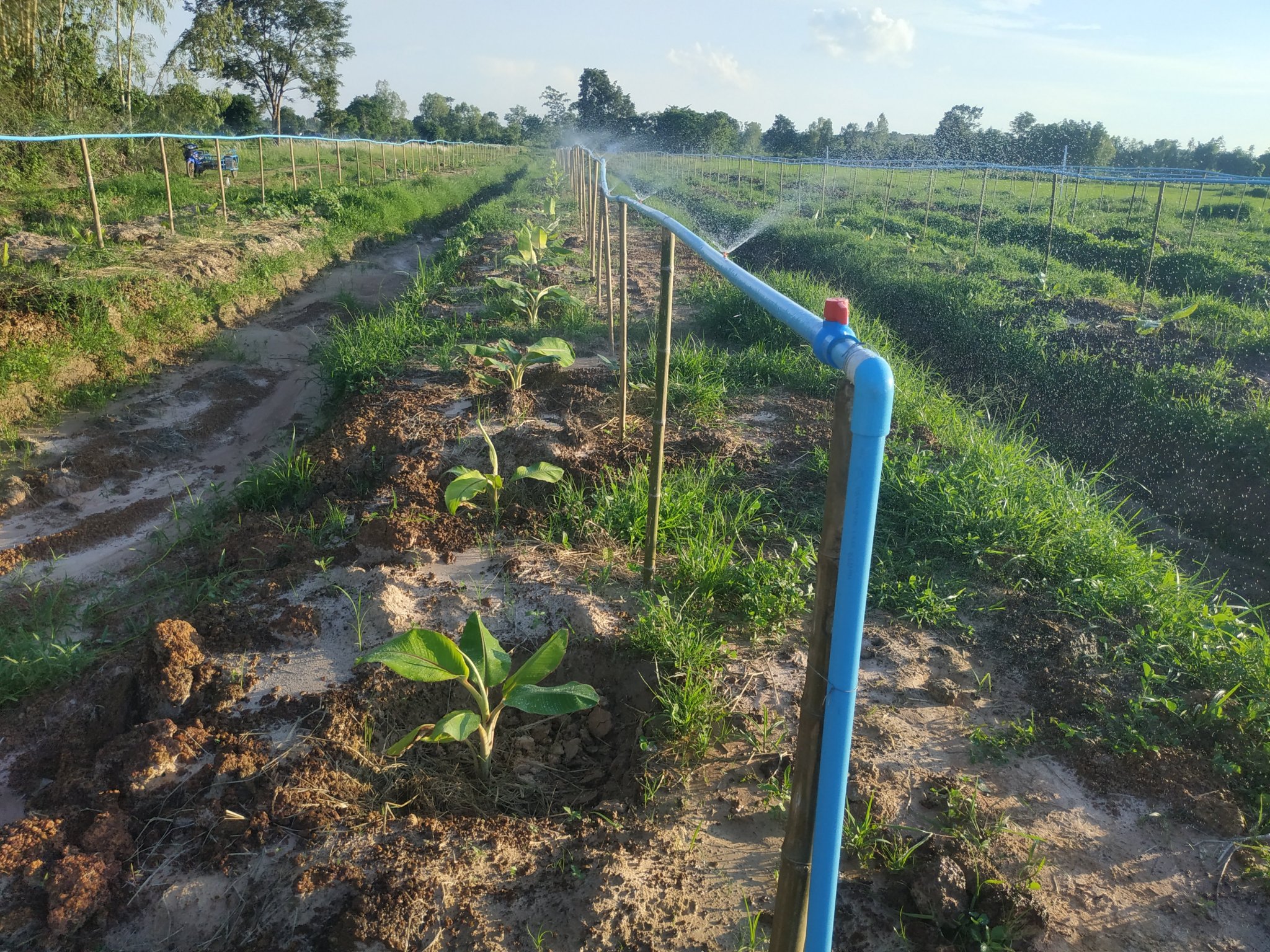
Climbing plants
in Farming in Thailand Forum
Posted
Rangoon creeper. https://www.gardeningknowhow.com/ornamental/vines/rangoon-creeper/rangoon-creeper-vine.htm
Coral vine. https://www.gardeningknowhow.com/ornamental/vines/coral-vine/growing-coral-vines-in-gardens.htm
Maybe too much volume of growth for only 2x3m.
Or grow food, like tua pak yao, pole beans.
VINES PRESENTATION (2020_07_05 17_36_38 UTC).pptx